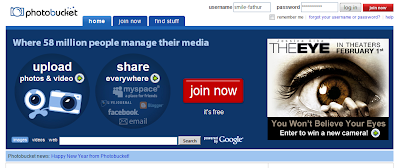Many clients ask me how to drive more traffic to their blogs. By now you have probably heard that blogs are an excellent resource to get leads as well as clients for your business. The best way to do that is by creating search engine friendly blog posts that get indexed in search engines. When people search for information on topics you discuss in your blog it appears on the search engine result pages. Potential customers then are able to read what you have to say and get on your mailing list.
So now it all boils down to techniques that help you effectively optimize your blog for search engines. Here are tips and ideas to do just that:
- Create A Keyword Rich Header For Your Blog. The header repeats on all pages on the blog. By making sure that your header contains targeted keywords, you are able to get more of your blog pages indexed in search engines.
- Treat Each Blog Post As A Separate, Optimizable Page. Use the process of search engine optimization on each blog post. This means that you need to create an optimized title for each post, find targeted keywords for each post and weave the keywords into your post's text.
- Make Sure That Each Blog Post's File Name Are Descriptive. Different blogging software behaves differently, but some will call your blog posts 2.html, 3.html, 4.html, etc. As you can see, that is not very descriptive and not particularly helpful to either people or search engines. When you create a post called "How Coaching Helps Business Owners", calling it "how-coaching-helps-business-owners.html" is a much better title than "5.html"
Make sure that your blogging software creates descriptive file names for your blog posts; it is better both for human readers and search engine spiders.
- Get Links Pointing To Your Blog. Quality links to your blog means more blog visitors and higher search engine rankings. Current search engine algorithms value links to your blog, which means that having links pointing to your blog will improve your blog's search engine rankings.
- Get Your Blog Listed in Blog Directories. Blog directories are a great source of getting unidirectional links to your blog. Since blog directory links many times are unidirectional (they link to you, but you don't link back to them), they are great for boosting your search engine rankings. Having many unidirectional links pointing to your web site will improve your search engine rankings.
A blog is an excellent marketing tool, but your blog will not attract more leads and clients for your business if you don't use search engine optimization techniques to optimize your blog and attract targeted search engine traffic to it.
Biana Babinsky shows you how to drive thousands of targeted visitors to your blog in her Step by Step Search Engine Optimization Special Report. Learn more about the report at http://avocadoconsulting.com/rlinks/zseo
---
Article Sources:






































